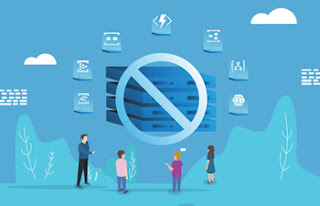Top Advantages of Choosing the Best Serverless Development Services
For new startups and smaller companies, serverless development is the way to go. Unlike large companies that have huge, fixed infrastructure expenses, choosing this model now is easier and less expensive than switching later. As a new company, timing is of the essence. Serverless development enables you to start your product development sooner, which is crucial when your time to market is so short. Here are some of the benefits of choosing this approach.
Function as a Service
The benefits of using Function as a Service (FaaS) over traditional server-based development are many. One of the biggest is that a serverless architecture enables horizontal scaling, since it can be decomposed into discrete functions. This allows you to avoid infrastructure management, while still enjoying the benefits of serverless development. However, FaaS can be more complicated to manage, and you might find yourself wanting a more complex serverless development solution.
Another benefit of using Function as a Service is the cost savings that it can provide. With this technology, you only pay for the resources that your app uses. There is no need to purchase expensive hardware or manage complex infrastructure. In addition, serverless application development services are cost-efficient. Because you only pay for what you use, you can afford to work with a developer who can focus on building the most efficient and cost-effective applications.
Code efficiency
With the help of serverless architecture, companies no longer have to worry about maintaining physical servers. Instead, they can focus on developing high-quality code, not on constantly upgrading infrastructure. With a serverless architecture, companies can count on an even distribution of information across multiple servers, which significantly reduces the risk of downtime. This is a key advantage for companies that want to improve their time to market.
However, there are some disadvantages to this method of architecture. Serverless functions have cold starts, and many developers try to avoid them by keeping them warm. Regular intervals are helpful for smaller functions, but are less effective for larger functions with complex workflows. One way to reduce cold start times is to choose the right programming language. Java and C# are notoriously slow when it comes to cold starts.
PaaS
One of the best ways to avoid having to build and maintain your own cloud infrastructure is by choosing PaaS, or platform as a service. This service enables you to avoid a large upfront investment in development tools and infrastructure while allowing you to use sophisticated programming languages and techniques. PaaS also allows you to collaborate with development teams distributed across the globe, as long as you can access the same development environment through the internet. This makes it easy to manage the application lifecycle from the remote location of the team.
Another advantage of serverless infrastructure is that it eliminates the need to install and configure backend servers. This means that developers can focus more on creating and developing their products and not worry about server management. Developers can also upload and run their app code through a serverless provider. This means less time is required to deploy updates and fixes to the application. As serverless code runs without a server, it may show a longer response time than other types of code, but it is significantly faster than those written on a monolithic stack.
No infrastructure management
When choosing the best serverless development services, the key factor to look for is no infrastructure management. While this may not be a problem for smaller applications, if you have a complex application, you may be unsure of which infrastructure stack to choose. Luckily, there are many options available. Here are some of the best:
The most significant advantage of using serverless services is the ability to scale your application easily without worrying about managing infrastructure. Most serverless companies will automatically add and remove server capacity according to your need, so you don't have to worry about scaling. This frees you up to concentrate on developing new products instead of implementing infrastructure management. Another benefit of using serverless services is their affordability. Most of them are based on pay-as-you-go models, meaning you only pay for what you use.
Cold start times
When choosing a serverless development service, consider the cold start time. The cold start is caused by the initial process of creating the container, which could take a few seconds. According to Chris Munns, Principal Developer Advocate for Serverless at AWS, cold start times affect less than 2% of all function invocations. Cold start times become an issue when the call is synchronous. Fortunately, there are several options for overcoming cold start times, including function prefetching.
While serverless functions have a cold start, there are ways to reduce them by keeping them warm or hitting them at regular intervals. Some serverless development services use languages like Python and Go to reduce their cold start times. While C# and Java are notorious for having the highest cold start times, other languages are known for having lower cold start times. To choose the right service for your needs, make sure to review their cold start time and the complexity of their architecture.
Integration with other Google services
When it comes to a scalable, secure and reliable serverless infrastructure, Google has you covered. The serverless application development platform can integrate with various Google services and enhances time efficiency, technology management, and administration. Lucille Games, a gaming app, is powered by Google's serverless platform. The game boasts high-grade image processing and traffic handling, as well as integration with other Google services. In addition, HomeAway uses Google Cloud services to provide vivid image analysis.
Serverless provides per-request charging, which reduces capacity planning and scale-out costs. This is because serverless services run on event-driven, ephemeral containers that are managed by a third party. In contrast, traditional servers require developers to buy and project capacity in advance. With serverless, developers only pay for resources used. Because serverless code runs only when needed, it scales up or down automatically based on usage.

%20(1).jpg)


Comments
Post a Comment